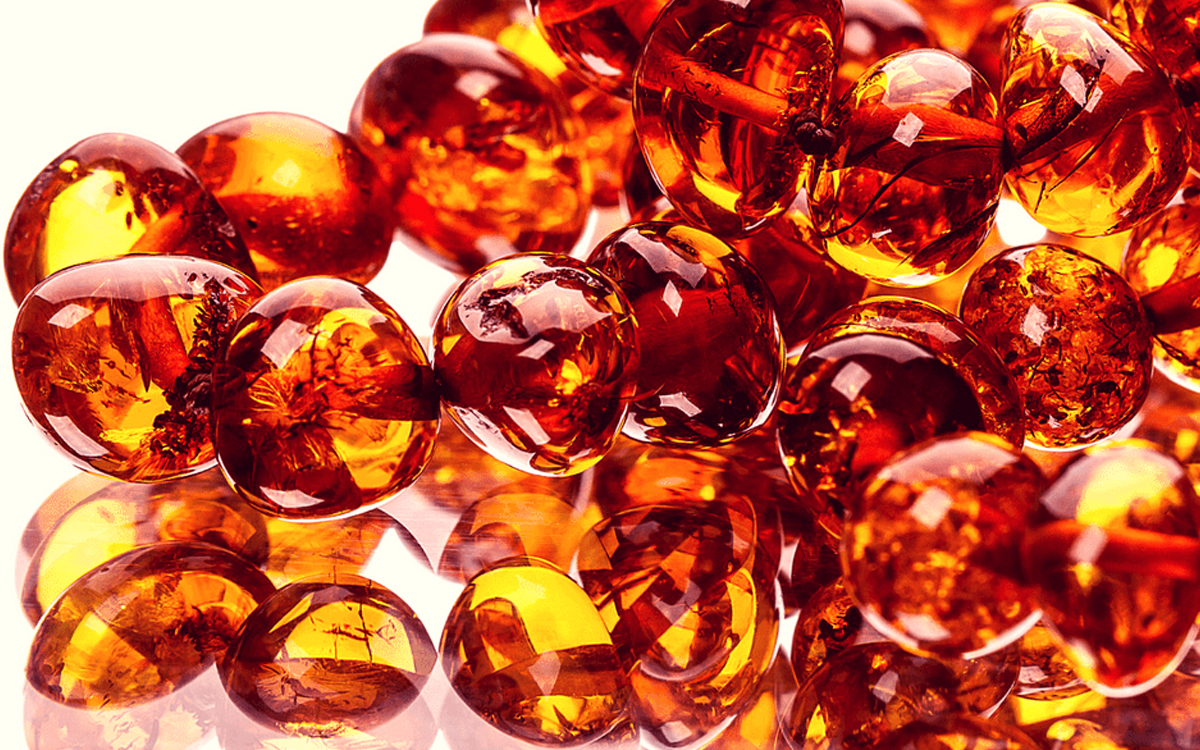- Everyone knows about the Silk Road trade route, however, not as many people know that the Amber Road trade route has also existed. It is not known when exactly the trading began but it is assumed that it began in the New Stone Age. Baltic Amber was first discovered in the centres of Jutland and Baltic Coast. Later it spread to Europe and Egypt. Amber traders collected the amber from the Baltic Coast, and then moved it from this coast to Southern Europe.
The first known trade route was from the east, near the Danube River, to the Black Sea. This trade route was sued to deliver amber to the ancient Greeks. Later the ancient Romans built an overland route linking Danube River to Italy’s Port of Aquileia. But these were not the only trade routes. There also was a sea route connecting the Baltic and North Seas with Britain, the Mediterranean and some other areas. Moreover, some of Baltic amber was found on King Tutankhamun’s breastplate which means that amber travelled to Egypt, too. Therefore, the Amber Road trade route went from the Baltic Coast to the Mediterranean, then from the Black Sea to Egypt and then was carried to Asia through the Silk Road.
King Tutankhamun is not the only Egypt pharaoh to be buried with amber. Some amber beads were found in Tethys pyramid in several tombs. It is believed that these beads were carried to Egypt back in 3400-2400BCE. in 1871 to 1890 archaeologist Heinrich Schliemann was excavating Troy and sound some amber in the cupola tombs.
Amber always held a special place in people’s hearts and was one of the first gemstones used in long distance trades. In Samland, which is a part of the southeaster Baltic region, this gem washed up on the beach in huge quantities. That is why people from the areas where this gem was scarce, were ready to pay a lot of money to get some beads. Not only amber looks beautiful but it can also be burned. When burning, amber releases a nice smell and for that reason it acquired a second name – “Bernstein” or “burn stone.”
During the first and the first centuries of our era, amber was heavily sought after by the Roman Empire and its colonies. This is when the Amber Road was established. The gem was so popular that was called “northern gold”. It was highly valued for its golden and reddish colours and was used in manufacturing adornments, implements, and utensils. Meanwhile opaque amber was used to make incense. At the end of the third century even more trade routes were established.
In 600 BCE the Greeks discovered that amber can act like a magnet when rubbed with a woollen cloth. Thus, people began making speculations about the nature of this gemstone. Some people believed that it was made from a tear of an Indian bird while others claimed it’s actually a solidified urine from a lynx.
Amber is incredibly light-weight and does not sink in the seawater, even in turbulent water. As a result, the stone either ends up on the shore, or gets buried in the sand. This, as well as insects and plants sometimes found within the stone, has caused some historians and archaeologists to be mistaken about its origins.
The Amber Road faced one of its greatest changes in the 13th century. Majority of Europe was Christian, and people began using amber beads for their rosaries. The Teutonic Knights conquered a part on the shore of the Baltic Sea and gained access to beaches full of amber. As a result, they gained monopoly over collection of amber. Anyone else caught collecting amber on the beaches was punished by death, usually by hanging. In 1264 agreement was made which officially declared the Order of the Knights of the Cross as the owners of all areas full of amber. The Sambian Archbishop received one-third of all amber collected in those areas. Death penalties remained a thing even many centuries later, in 19th century people, who collected amber without the permission of the government, were executed. This shows how important amber collecting was.
You can learn more about amber, its history and how it’s processed while travelling the Amber Road from Kaliningrad to Latvia. Plus, if luck is on your side, you may even find some beads on the shores.
The Value
Back in the days of the Amber Road, it was discovered that some beads are clear while others are opaque. The opaqueness of the stone is due to tiny bubbles within the gem. This type of amber has a lower value, so to make it clear, the amber is put inside boiling water with oil. This makes the bubbles disappear.
Amber is, in fact, not a stone but rather a hardened resin that fell from the now-extinct European pine trees millions of years ago. When a tree gets injured, it releases sap which then washes downstream. Over several millions of years this sap, often along with any insects or plants trapped within, hardened. Then it was discovered by people.
Interest in Baltic Amber
Though there are different kinds of amber, archaeologists are mostly interested in Baltic amber because of the Amber Road and the fact that Baltic amber contains succinic acid. Depending on the weight of the bead, genuine amber may contain from 2% to 8% of succinic acid. Testing the beads for authenticity can be hard and damaging for the gem itself. Luckily, in 1960s scientists began using infrared spectroscopy which helps to identify genuine amber and does not damage the gem.



